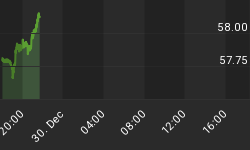Further to my post of yesterday, "Stocks: anticipator of economic health", where my conclusion was that the stock market is an excellent anticipator of underlying economic growth, I decided to cast the net a bit wider and also analyze a number of additional bourses. I again used my algorithm that tracks the ECRI Weekly Leading Indicator (WLI), but adjusted it to a monthly basis instead of weekly to calculate the Monthly Smoothed Annualized Growth Rate (MSAGR) for the respective stock market indices.
The Eurozone displayed similar characteristics to those of the S&P 500 Index and MSCI World Index in US dollars. The zero line is of utmost importance. When the MSAGR of the Eurozone breaks decisively into negative territory it heralds a drop in economic activity approximately four months hence. A few weeks ago (in September) it came precariously close but rebounded, indicating that the leading indicator of the Eurozone has likely gained momentum.

Sources: I-Net; Plexus Asset Management.
Germany was the stalwart in the Eurozone, though. Although the Dax's MSAGR trended down, it never came close to zero.

Sources: I-Net; Plexus Asset Management.
Elsewhere in the Eurozone things did not look rosy. Even France's relatively strong economy became extremely vulnerable as indicated by the stock market's smoothed growth rate. The MSAGR of the CAC 40 appears to have bottomed and is heading for positive territory.

Sources: I-Net; Plexus Asset Management.
The outlook for the economies of the so-called PIIGS, the Eurozone's problem children, is dire, though. Greece's stock market prices are anticipating a deep recession.

Sources: I-Net; Plexus Asset Management.
A similar picture is evident for Ireland.

Sources: I-Net; Plexus Asset Management.
Italy's stock market is holding up reasonably well, indicating that the economic outlook is less bad than anticipated.

Sources: I-Net; Plexus Asset Management.
Although the smoothed growth rates of the stock markets in the Iberian Peninsula indicate contraction of the economies in Portugal and Spain, it is relatively shallow and appears to have hit bottom.

Sources: I-Net; Plexus Asset Management.

Sources: I-Net; Plexus Asset Management.
The MSAGR of the FTSE 100 briefly dropped to below zero but staged a strong rebound, indicating that the market is anticipating stronger economic activity in coming months.

Sources: I-Net; Plexus Asset Management.
In South America the Argentine bourse is anticipating stronger economic growth in the near future.

Sources: I-Net; Plexus Asset Management.
The Brazilian market players do not share the optimism of their Argentine partners, though.

Sources: I-Net; Plexus Asset Management.
It is no wonder the Brazilians and Russians are crying foul about the strength of their currencies!

Sources: I-Net; Plexus Asset Management.
In the Far East investors in the Japanese stock market are significantly less optimistic than the momentum of the official leading indicator suggests. However, the stock market's smoothed growth rate is heading for positive territory again.

Sources: I-Net; Plexus Asset Management.
The smoothed growth rate of India's stock market has resumed an uptrend into positive territory.

Sources: I-Net; Plexus Asset Management.
Commentators are still focusing on the extremely weak OECD Leading Indicator for China and the potential effect thereof on the Chinese stock market. The MSAGR of the Shanghai Composite Index has bottomed in negative territory, though. It indicates to me that yes, economic growth is likely to slow in the next few months but it will be short-lived as the smoothed growth rate of the Shanghai Composite Index is again approaching positive territory.

Sources: I-Net; Plexus Asset Management.
I repeat my bottom line of yesterday: "Stock markets are probably right regarding an improved global economic outlook for the first quarter of next year. However, sentiment can turn quickly. With a number of black swans on the radar I will watch the MSAGRs of the different markets very closely."
















